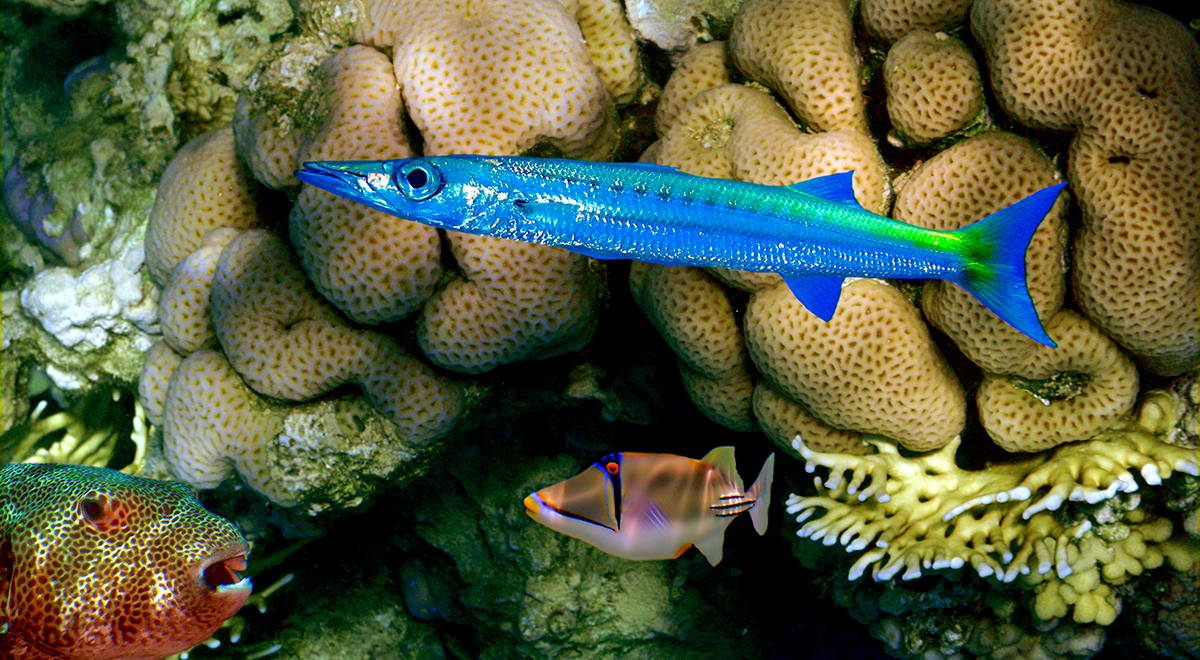It is relatively rare (approximately 50,000 cases are reported every year worldwide), but those who eat reef fish from tropical and sub-tropical waters run the risk of ciguatera poisoning. This is a biotoxin that shows up primarily in predator fish near the top of the food chain, such as barracuda, moray eel, amberjack and certain kinds of snappers.
Unfortunately, as the demand for seafood increases and greater amounts of fish are imported from warmer regions of the world, the risk of ciguatera poisoning will continue to rise. Furthermore, some restaurants and fish merchants are actually engaging in “fish fraud,” substituting one type of fish for another – making it difficult for consumers to protect themselves against such risks.
Ciguatera toxin comes from a certain type of plankton, known as dinoflagellates, which is consumed by reef-dwelling herbivorous fish. These fish are eaten by predatory carnivorous fish. Ciguatera toxins accumulate in these top-level fish, which are most commonly harvested for commercial purposes. Unfortunately, it is impossible to identify ciguatera contaminated fish by sight or smell – and the cooking process does not remove the toxin. Furthermore, the symptoms are difficult to diagnose.
Those symptoms include nausea, vomiting and diarrhea as well as unexplained headaches, muscular pain and loss of physical control, odd prickling or burning sensations on the skin, vertigo and even hallucinations. These symptoms, which can persist for years, are similar to those of multiple sclerosis, for which it is often misdiagnosed.
Most victims eventually recover, but relapses can occur for any number of reasons. It is fatal in a small number of cases. A correct diagnosis is dependent on a number of technical laboratory tests, which include analysis of brain receptors and a procedure known as liquid chromatography-mass spectometry, or LCMS.
Recent studies have revealed that at least 33% of fish sold in markets and by restaurants are not what they are labeled to be. Sushi restaurants are particularly suspect; almost 95% of all sushi tested was discovered to have been mislabeled. To be fair, this is not necessarily the fault of restaurant, as its suppliers may be the ones doing the mislabeling.
The reason this is happening is that commonly eaten fish, such as salmon, snapper and cod, have been overfished and are in short supply. For that reason, suppliers and restaurants have been known to substitute other, less expensive fish, passing them off as the more expensive and popular kinds. Sadly, there is very little official oversight or enforcement to prevent this kind of “fish fraud.”
The only reliable way to protect yourself from ciguatera poisoning is to avoid eating seafood, particularly when traveling in tropical regions. At the very least, be certain of the source of your fish and avoid those species that are high on the marine food chain, such as barracuda and moray eel.
Although a restaurant may unknowingly be sold mislabeled fish by a supplier, if its customer winds up with ciguatera poisoning, it is the restaurant that will bear liability. This should be kept in mind if you are a ciguatera victim and decide to seek a legal remedy for your condition. Restaurant owners should be extremely cautious when dealing with suppliers, particularly those who deal with tropical and semi-tropical fish.

